Monuments, Croatia
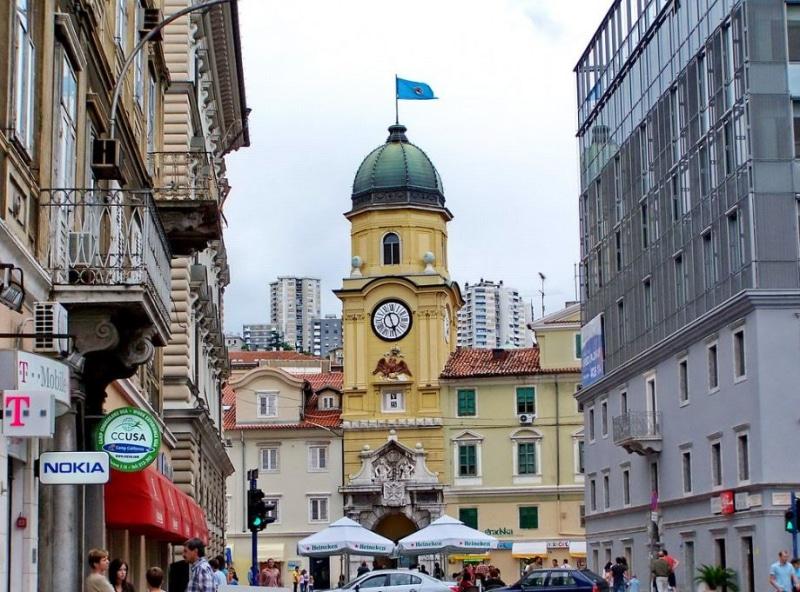
Removed from Unnamed collection
City Tower Rijeka 
City Tower, a symbol of Rijeka and a good example of a typical round tower access-point, which lead into the fortified town. Today it dominates the central part of Korzo, although during its lifetime it was overtopped by more recently constructed buildings.
It was built in the Middle Ages, probably on the foundations of the Late Antique littoral town gates. Some baroque phases of its construction can be seen on the lower part of the front of the Tower, which are characterised by a richly decorated portal, an imperial coat of arms carved out of stone and relief of the Austrian emperors Leopold and Charles VI. Rijeka paid them special respect due to the maritime orientation they introduced into the state policies of the Austrian court. The Tower’s superstructure, on which a city clock has been situated since the 17th century, has been remodelled several times; most significantly at the turn of the 18th century under the guidance of municipal engineer A. Gnamb, the last time was at the end of the 19th century, based on a design by F. Bazarig. http://www.visitrijeka.eu/What_To_See/Monuments/City_Tower
Map
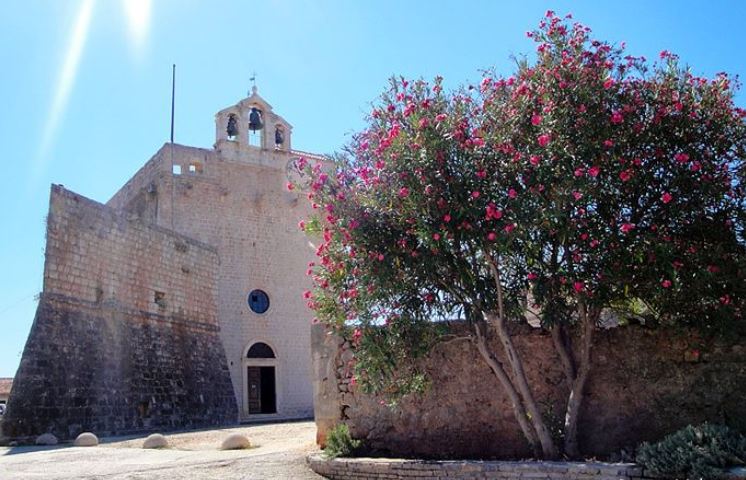
Removed from Unnamed collection
Church Fort of St. Mary 
One of the most significant monuments of the island of Hvar is definitely the Church – fort erected in 1571, after the Turkish attack on the location of an older church that originated in 1465.
The church has the shape of a fort with an observation post and a loop-hole and from its top, there is a beautiful panoramic view of the surrounding places and fields. The church preserves valuable works of Stefan Celesti ('Lady of Mount Carmel'), Antonio Sciuri ('Mary's Childbirth'), Giuseppe Alabardi ('Resurrection' and 'Placing into the tomb') Marko Rašica ('Lady of Mount Carmel') and Celestin Medović ('Homage of the Three Kings'). https://www.visit-hvar.com/tours/church-fort-of-st-mary-vrboska/HV-TR-23
Map

Removed from Unnamed collection
Madonna del Mare Statue 
On the promontory in front of the one-time cemetery, a girl of stone extends her arm to a gull. This, however, is a new sculpture, the work of sculptor Car, and it was erected here in 1956 and turned into one of Opatija’s symbols. Before that, in its place, namely until demolished by a storm, stood the “Madonna del Mare,” the work of sculptor Rathausky from Graz (his also is the fountain “Helios and Selene” in the park between St. Jacob’s Church and hotel Imperial). The “Madonna” was erected to keep vigil over the soul of count Arthur Kesselstadt, who vanished, not far off from that promontory swallowed by the pre-Easter waves in 1891. During that excursion, the countess Fries also lost her life, but her son Georg was saved. Today a gilded variant of the Madonna can be seen in front of Saint Jacob’s Church. http://www.opatija.net/en/sights/madonna-del-mare
Map
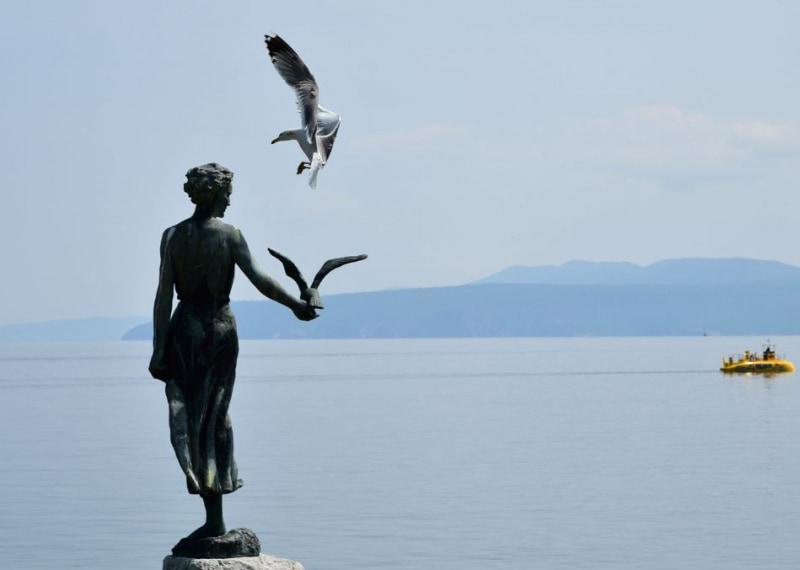
Removed from Unnamed collection
Maiden with the Seagull 
The girl with the seagull is a symbol of Opatija and the whole of Kvarner. An elegant statue on a rock along the coastal promenade Lungomare in Opatija hides an interesting story and the identity of a girl who has been a secret for decades.
The story began back in 1891 when Count Arthur Kesselstadt tragically lost his life in a spring storm at sea in front of Opatija. Overwhelmed with pain, the count's family placed a sculpture "Madonna del Mare" on a rock by the sea to watch over his soul. Time left a mark on the sculpture and damaged it, but it was later restored. Today, the gilded replica is located next to the church of St. Jakov, and the original is kept in the Croatian Museum of Tourism in Villa Angiolina.
When the place where the "Madonna" once stood was left empty, it was decided to place a new sculpture on it. The "Girl with the Seagull" was set up in 1956 on a location with a beautiful sea view. The scene is especially impressive at night, when the sculpture is illuminated by special spotlights, or during storms, when waves crash against the shore and water spills over the rocks, creating the impression of a nymph born from foam. That is why this statue is often called the "Opatija nymph". http://www.visitopatija.net/hr/atrakcije/djevojka-galeb
Map

Removed from Unnamed collection
St. James' Park 
Located right in the centre of Opatija, St. James’ Park is a recognisable landmark of the town. The well-manicured green lawns and the harmony of colourful flowers make a perfect setting next to the Church of St. James.
The park is distinguished by its neo-baroque fountain with sculptures of Helios and Selene (the god of the Sun and goddess of the Moon in Greek mythology), a work by the sculptor Hans Rathausky. The park stretches down to the sea where the Juraj Šporer Art Pavilion is located – the venue of many artistic events and exhibitions. https://www.visitopatija.com/en/st-james-park-a-harmony-of-colours-and-scents-p480
Map
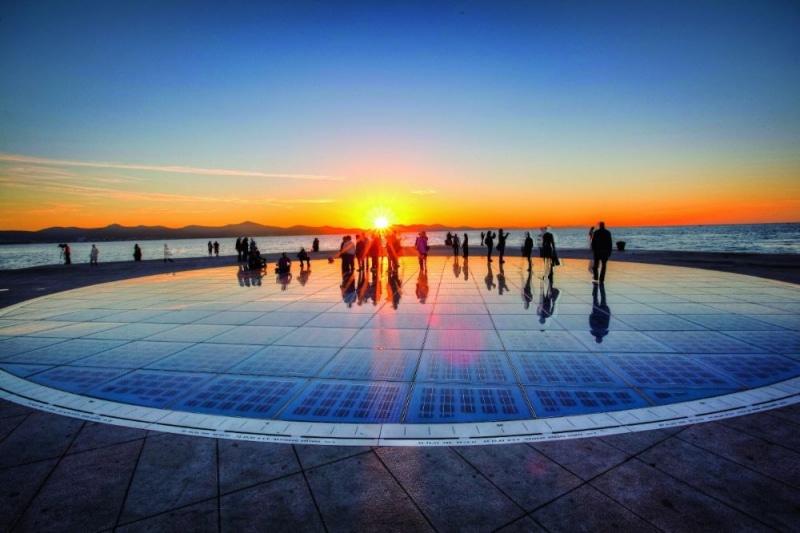
Removed from Unnamed collection
The Greeting to the Sun 
This new symbol of Zadar is located in the Zadar port on the western point of Zadar Peninsula. The Greeting to the Sun is overlooking the Zadar Channel, the islands and the widely known sunset. With this installation, Zadar has got a new tourist attraction.
The modern installation Greeting to the Sun is made of 300 multilayer glass solar panels in the shape of a circle of a diameter of 22 meters. Throughout the day it collects the energy of the sun and transforms it into the electricity, which is consumed in and around the installation throughout the night. The Greeting to the Sun in the immediate proximity of the Sea Organ, the second modern intervention on Zadar's waterfront, and both of them brought Zadar to the front covers of all the world media. https://zadar.travel/attractions/attractions/the-greeting-to-the-sun
Map
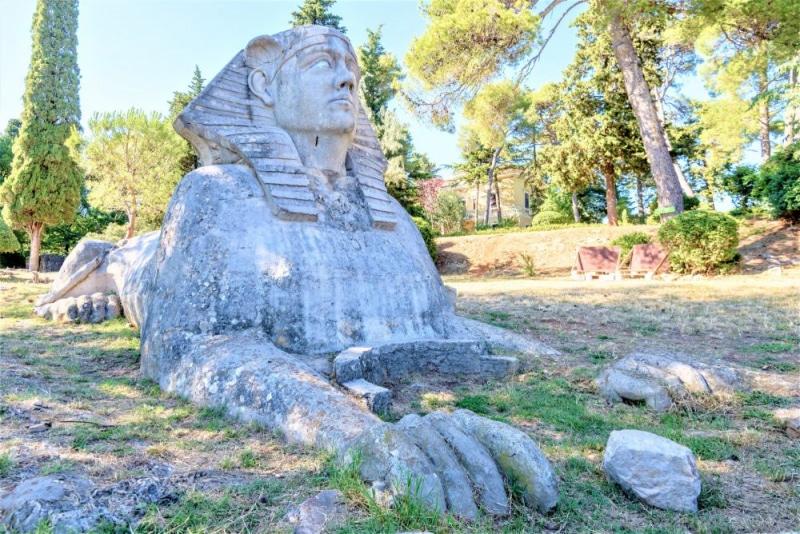
Removed from Unnamed collection
Zadar Sphinx 
The stories about the sphinx in Zadar and the treasure buried under it were the inspiration for many fantasies of generations of Zadar inhabitants.
The replica of the Egyptian Sfinx in Zadar had the relief of an eagle, and instead of claws, it had fingers with which it was once holding a big sword for the protection of a shell with a little fishpond.
Devastated by the pain because of the premature loss of his wife Attilia, the famous Zadar citizen Giovanni Smirić in 1901 built a sphinx made of concrete in her honour. It can be found in the part of the city called Brodarica, within the space of the Villa Atilia and the park in the bay Maestral, and according to a legend it fulfils love wishes to romantic souls. https://zadar.travel/attractions/attractions/sphynx
Map
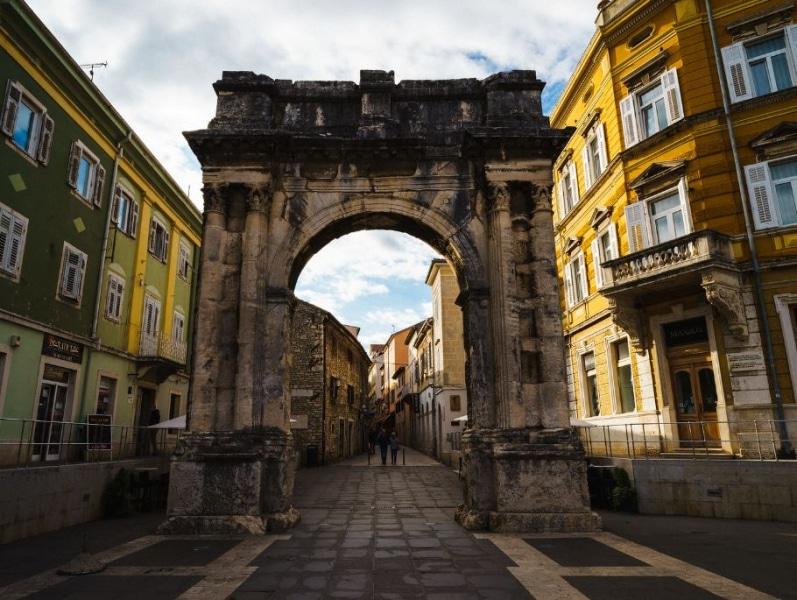
Removed from Unnamed collection
Arch of the Sergii 
The “Golden Gate” was erected between the years 29 and 27 BC by the Sergi family, in honor of three members of the family who held important positions in Pula at that time. This triumphal arch leaned against the city gate Porta Aurea thus called because of its richly ornamented arch or gilded elements. The gate and wall were pulled down in the beginning of the 19th century as a result of the city expansion outside the city walls.
The Arch was constructed in Corinthian style with strong Hellenistic and Asia Minor influences both in the method and ornaments. As the eastern side was not visible it has remained for the most part uncarved, while the western, town side is richly decorated. Today numerous cultural performances, theatrical and musical, are held on the square next to the Arch. The adjacent street is a shopping area. https://www.pulainfo.hr/where/triumphal-arch-sergi-golden-gate
Map
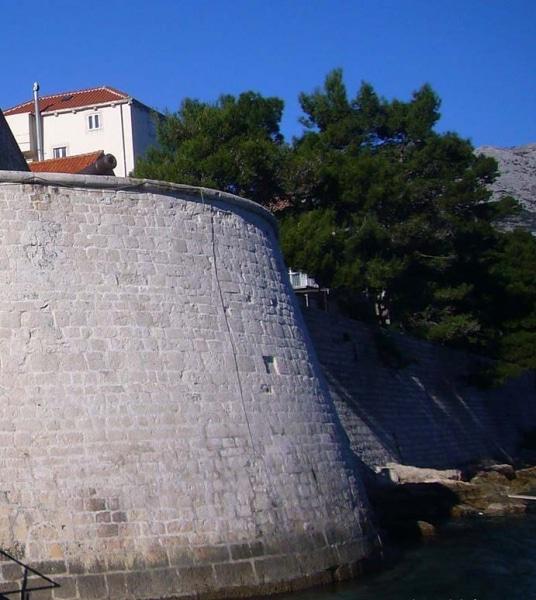
Removed from Unnamed collection
Tower of All Saints 
Tower of All Saints, locally called Kula Svih Svetih is also called Capello tower or Rampada. It is built 1493, as part of 12 Korcula towers. It is located on the South-East part of Korcula Town walls, situated in Rampada street, Zakerjan area. Nowadays, the only basement is left of this tower. It is named after All Saints Church located in its near vicinity. https://www.korculainfo.com/towers/all-saints/
Map

